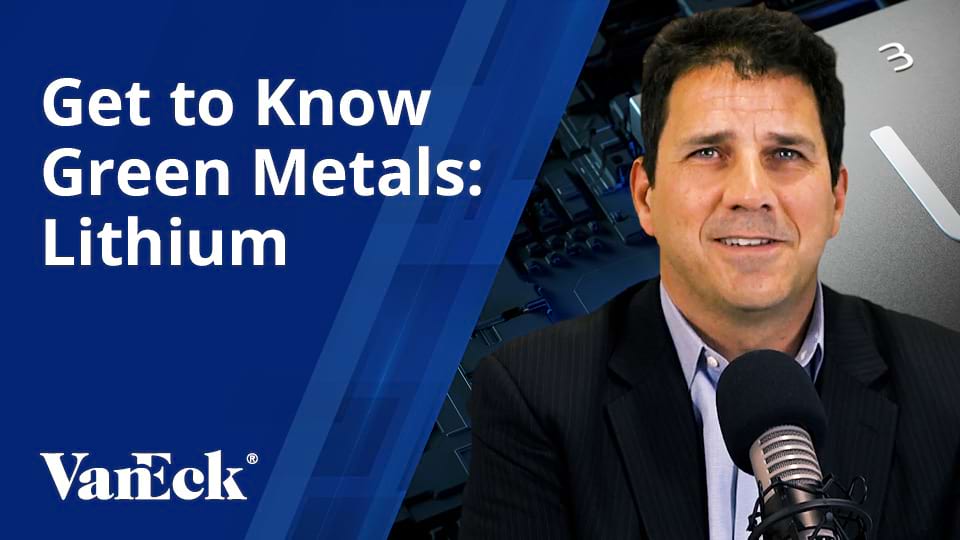Fixed Income ETF Myths
22 September 2020
Watch Time 6:07
Jenna Dagenhart: Hello and welcome to Asset TV. Joining us now to share two fixed income ETF myths is James Kim, Director, ETF Capital Markets at VanEck. James, some people think that in volatile markets, or a fixed income sell-off, ETF liquidity will evaporate, and the ETF structure will be stressed and broken. But you say, "This is just a myth." Why?
James Kim: Sure, Jenna. Thanks for having me. I think a lot of this stems from a perception that features of the ETF structure can result in investors being uniquely harmed or susceptible to suffering more than investors who access the market through other vehicles, such as mutual funds. In reality, investors in fixed income ETF should be no worse off than investors who use other types of investment vehicles and may actually benefit from the features of an ETF in times of market stress.
Historically in times of volatility, we've actually seen fixed income ETF trading volumes increase even as liquidity and trading in the underlying bonds is decreased. This dual source of liquidity has benefited ETF investors who have been able to transact at tight bid/ask spreads under normal circumstances, and have been able to transact still at reasonable spreads in times of stress. ETF investors benefit from an additional layer of liquidity, not found in other vehicles. Because shares of an ETF can also trade between buyers and sellers on an exchange, there's often no need for creation or redemption. And in these instances, no need for an authorized participant to trade the underlying bonds.
Jenna Dagenhart: What about a scenario, James, in which there's net selling of ETF shares? What happens then?
James Kim: Sure. In a scenario in which there's net selling of ETF shares, ETF market makers would likely be the ultimate buyers via a price they deem to encompass not only the valuation of the underlying bonds, but any anticipated transaction costs. Whether the market maker chooses to hold the ETF shares on their books or redeem their shares, the market maker will have already estimated what these costs would look like and will have reflected them in the market price that they make.
During periods of volatility, these transaction costs may spike, causing temporarily larger than average divergences between the market price and NAV (net asset value). But regardless, there will still be quotes in the market that the market maker would be willing to bid or offer shares at. It is also important to note, these transaction costs are borne by the transacting investor. The ETF and its remaining shareholders typically do not bear this cost.
Jenna Dagenhart: Turning now to myth number two. We have premiums and discounts indicate that ETFs are mispriced, and investors are not paying a fair price, but you say, "Not true."
James Kim: Yeah, exactly. A premium or discount is a difference between a fund share price and its net asset value or NAV. NAV is a measure of a funds value, including the fund's holdings as well as any liabilities, such as accrued expenses or borrowing. Both ETFs and mutual funds calculate NAV once per day. NAV has importance to investors beyond the fair estimation of a fund's value. Mutual fund investors can transact at NAV, as can authorized participants who can create or redeem ETF shares.
Unlike mutual fund investors however, ETF investors generally buy or sell their shares at the market price quoted by ETF market makers throughout the day on the stock exchange. These secondary market prices reflect not only the market maker's valuation of these bonds, similar to what NAV is looking to achieve, but also any anticipated trading costs. Differences between the market price and NAV are measured by the premium or discount.
Jenna Dagenhart: Quickly following up on that, James, what kind of cost does the premium or discount incorporate?
James Kim: Sure. The premium or discount incorporates costs that shareholders otherwise would incur if they were to replicate the fund's portfolio. The difference is that with an ETF, the costs are paid by transacting shareholders. For example, if an ETF investor’s selling of shares results in redemption, those sellers pay for the cost of the redemption because the market maker will have incorporated those costs into their secondary market price. Shareholders who remain in the fund do not bear these transaction costs because the redemption is satisfied via the income delivery of securities. As a result, ETF portfolio managers generally do not have to sell securities or redemptions.
On the other hand, mutual fund investors who redeem their shares at NAV are effectively transferring the execution risk, as well as any other associated costs, to shareholders who remain in the fund. To the extent that underlying securities are sold at market values that are less than those values used to calculate NAV, it is the remaining shareholders who will experience that loss. ETF market prices better reflect the market's real time assessment of not only the portfolio's value, but also trading costs.
ETFs provide not only a valuable price discovery tool for the overall marketplace, but also provide investors with real time executable pricing on their investment. In times of market stress, a discount to NAV may represent the price of immediate liquidity in a certain market. ETFs provide the benefits of price transparency and liquidity in stress conditions, which is when these benefits have the greatest value.
Jenna Dagenhart: Well, James, great to have you. Thanks for joining us.
James Kim: Thanks, Jenna.
Jenna Dagenhart: And thank you for watching. That was James Kim, Director, ETF Capital Markets at VanEck. And I'm Jenna Dagenhart with Asset TV. To receive regular updates from VanEck's experts, please visit vaneck.com/ucits/subscribe.









